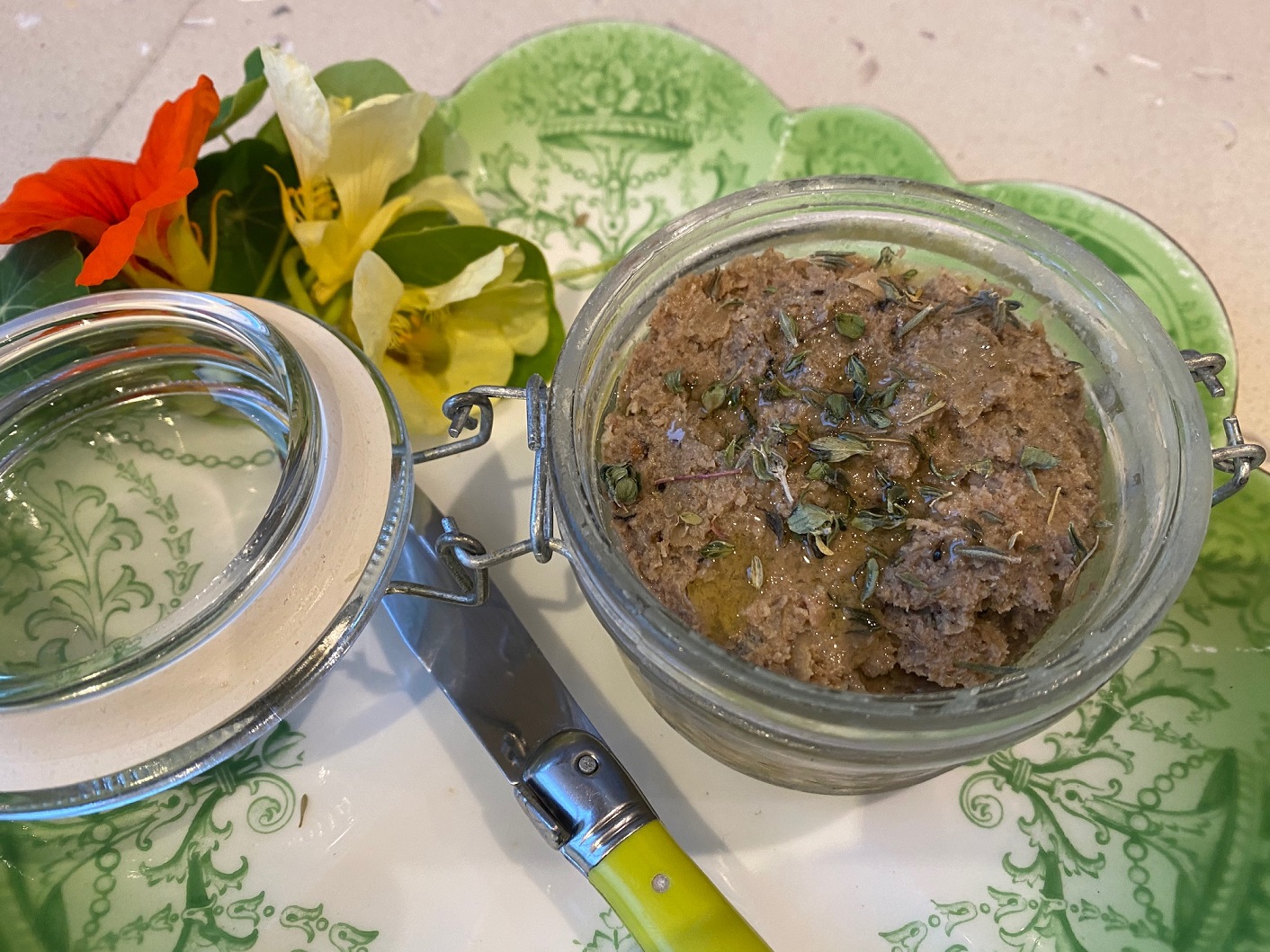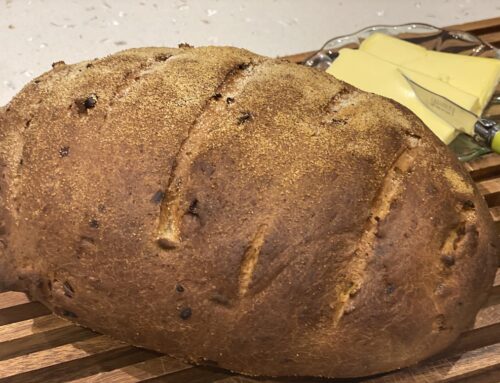Duck livers are available from your poultry shop or supermarket; I buy mine from my nearby supplier, Luv-a-Duck; they come fresh in large 2kg bags, so I freeze them in small packages of 200 – 300g pouches. You can substitute chicken livers for the duck, if you wish. Interestingly, the chicken livers have a darker colour and stronger flavour. They both taste equally good. This pâté is a great LCHF food and the iron in the livers is especially good for us.
Makes 200g
| Ingredients | |
| 20g butter 1 tbsp olive oil 1 small onion, peeled and diced finely 2 cloves garlic, peeled and finely chopped 2 rashes bacon, chopped 200g duck or chicken livers 10g butter
|
¼ tsp grated fresh nutmeg Freshly ground black pepper Sea salt Leaves from 2 sprigs thyme 30ml brandy Juice of a small lemon, about 1 -2 tablespoons Extra 90 – 100g butter to add to the mixture |
Method
To prepare the livers, trim away any stained and greenish parts, as even a small amount of this will make the pâté bitter; remove the connecting threads between the lobes.
Heat 10 grams of the 20grams of butter and 1 teaspoon of the olive oil in the frying pan; sauté the onions for a few minutes until translucent, without colouring them; add the bacon and cook a few more minutes. Add more butter and oil if necessary; add the garlic to the pan stirring with a wooden spoon, making sure it does not burn. Remove from the pan and set aside.
In the same pan, melt the remaining 10grams of butter and oil until foaming, add half the livers and half the thyme leaves, sauté very quickly until the livers just change colour and are slightly golden brown on each side and still soft in the middle. This should only take a minute or two in a hot pan. It is essential that you do not overcook the livers, or they will be bitter, watch them carefully as they change colour very quickly. Remove the livers from the pan and add to the onion mixture you set aside.
Add the next 10g butter, plus a teaspoon of olive oil, and sauté the remaining livers in the same way.
Return all the livers and onion mixture to your pan, increase the heat, add the brandy and nutmeg and lemon juice, and cook for one minute. Transfer the livers to a food processor and blend.
If you like a very smooth pâté, you may like to sieve it. I rarely sieve my pâté as I like the slightly coarser texture.
In a small pot, melt the 150grams of butter and add it slowly through the funnel of the food processor to incorporate it into pâté. You may not need to add all the butter, so watch the consistency and add the butter to your preference.
Taste and adjust the seasoning; you may like to add extra nutmeg, lemon juice, salt and pepper.
Spoon the pâté into small pots.
To prevent the surface of the pâté from oxidising, that darkens in contact with the air, cover the surface with thin layer of clarified butter; this also keeps the pâté fresh for a week. If you are going to use it the day of making it, press cling wrap over the actual surface of the pots, so there is no air contact, and then cover again with cling wrap.
To clarify butter
Take some muslin, approximately 30cm square, or, alternatively, briefly boil a new chux to remove the dye and ‘dressing’. To use, wet the muslin, double the muslin cloth over and hold it firmly over a jug or basin.
Melt the butter until foaming, and pour it into the jug through the muslin or chux. All the froth and milk particles will be caught in the cloth, resulting in crystal-clear clarified liquid underneath.







